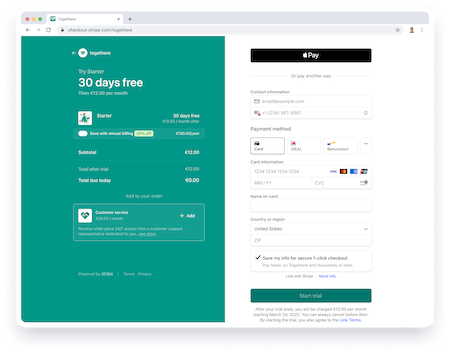
Not Giving Up: Brooke Fabbri knows how to take on life’s toughest challenges, and her husband and daughters are right there by her side
July 7, 2022July 4 through 8 blog posts
July 8, 2022Why we made the switch from PayPal to Stripe
Last month, we announced on LinkedIn that we had recently made the switch from PayPal to Stripe, and we could not be happier with our decision.
Look, we feel no ill will toward PayPal, as they helped us get this business built from the ground up, but the reality is that there are many limitations with their plugin on WooCommerce. Yes, PayPal is the giant that really helped businesses be able to run e-commerce stores, but they have failed to do one thing over the past couple of years… adapt.
There is no question that PayPal is the foundation that all these other merchant payment providers have modeled their businesses after, but they are just that, a model.
PayPal knows they do not have to make adjustments because they are going to seemingly always have people on their platform. However, if enough people decide enough is enough, maybe they will decide to adjust to the times.
Now look, this is not meant to be a bash fest on PayPal, so we will leave it at that and get into the reasons we considered when making the jump from PayPal to Stripe, and why we saw Stripe as a much more viable option for our business.
- Online merchant fees are lower on Stripe than on PayPal – One of the things we considered when switching to Stripe was possible cost-benefit. The fees on Stripe were slightly lower than on PayPal, so this was certainly a selling point considering we were already weighing our options and thinking about moving away from PayPal.
- When customers check out on a site using PayPal, it is not easily known that they can pay with a credit card – One problem that became more frequent during our final months with PayPal was the fact that they seemed to do everything in their power to make customers wary. We got call after call from people asking if there was any other option available to check out other than PayPal, as it was difficult to know from a buyer’s perspective that you could just pay with your credit card through PayPal checkout.
- For orders on your phone, you have to create a PayPal account to checkout – We get a lot more foot traffic from people on mobile devices than on desktop, so it kind of scares us to think how many people might have just abandoned their carts and left our site before checking out because they were told they had to create a PayPal account.
- Stripe does not take you to an external link, so it makes customers feel more secure – With Stripe checkout, there is no link that opens in a new tab or browser. You just check right out on the website, which makes it much more simplified and secure-feeling for customers.

- Stripe’s invoice fees are supposedly much lower than PayPal’s – Now this is something we have not fully figured out yet, as we still had to pay fees for a recent invoice on Stripe, but we read that there is a way to have “free” invoices through Stripe.
- Stripe has 24/7 support – I have talked to PayPal support before. They can be very lackadaisical and difficult to get in contact with. Stripe is apparently not the same way, but hopefully we will not ever have to find out if their support truly is 24/7.
- Stripe is constantly adapting to the “new world” – Our webmaster has called PayPal a dinosaur, and we would tend to agree. They do the basic things they need to in order to not completely fall behind, but they keep their updates and changes too minimal to an ever-adapting world.
There are probably more reasons than this that people can come up with when it comes to comparing Stripe to PayPal, and the reasons may tilt in either one’s favor.
That said, however, we felt strongly enough through these seven comparisons to make the jump to Stripe, and so far it is working wonders for us. The checkout process is much smoother and quicker, and we strongly believe this seemingly simple change can help take us to the next level.
At the end of the day, when considering between Stripe and PayPal, there may be a world of comparisons for you to go through, and PayPal might even come out on top. But, we did want to take this opportunity to share our experience and our thoughts when making the decision to switch from one checkout merchant to another.




